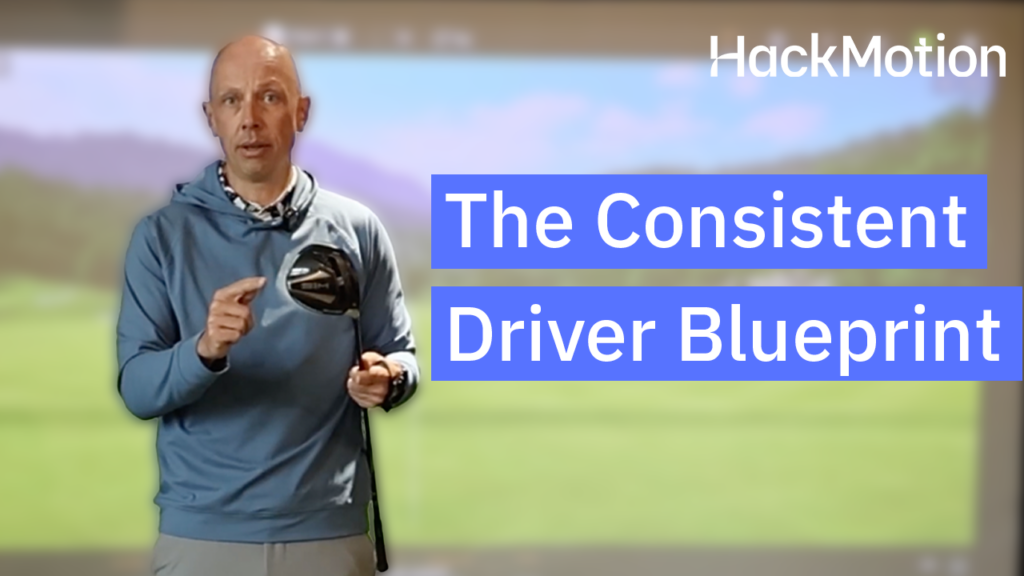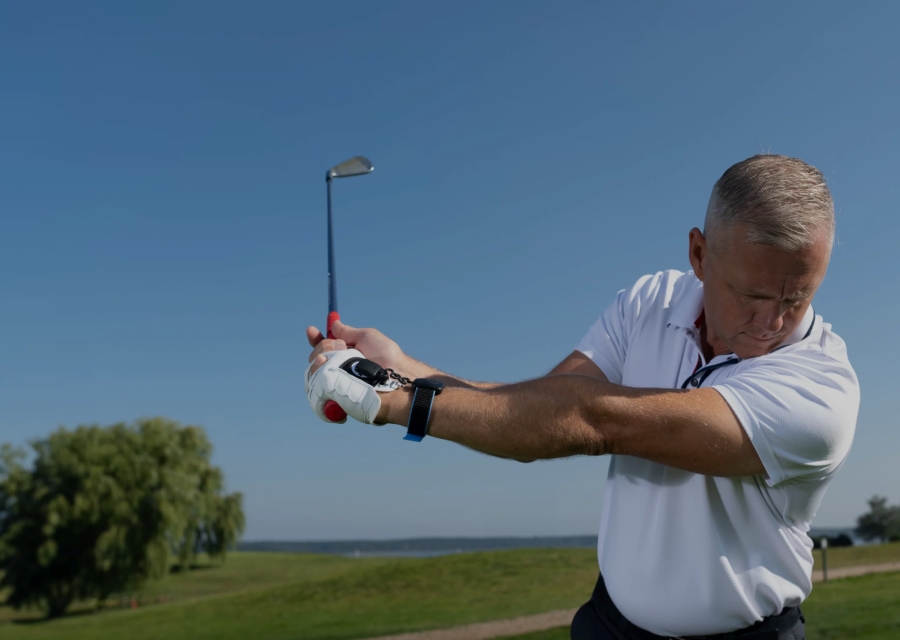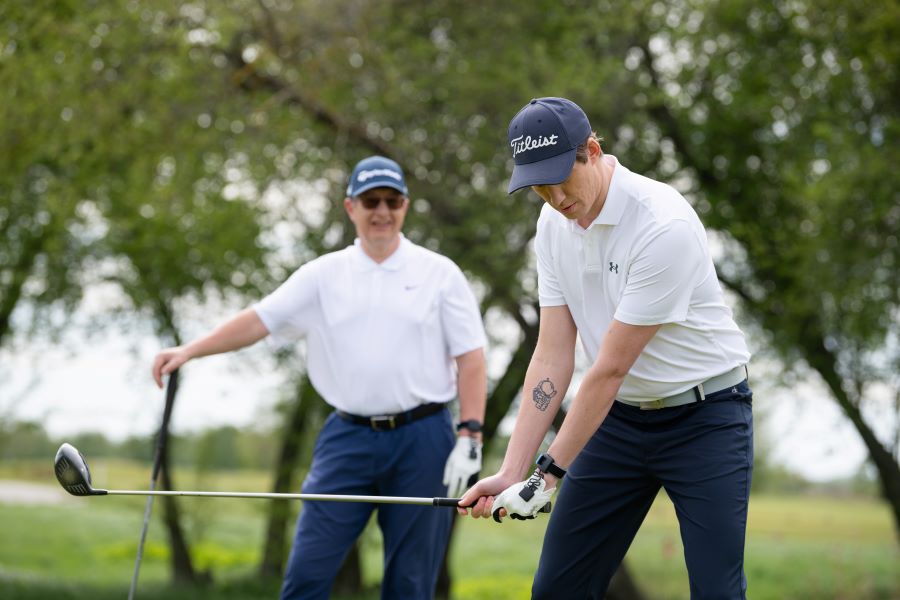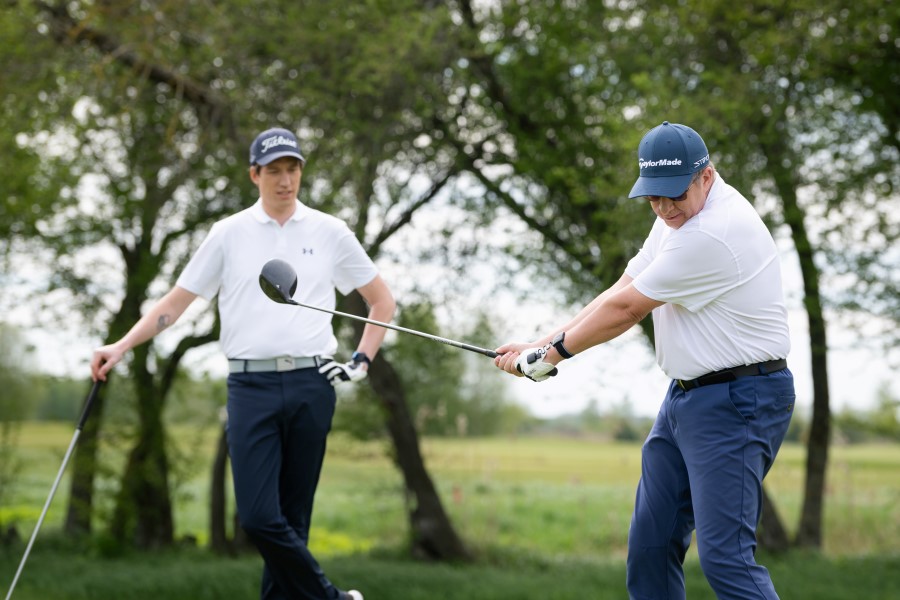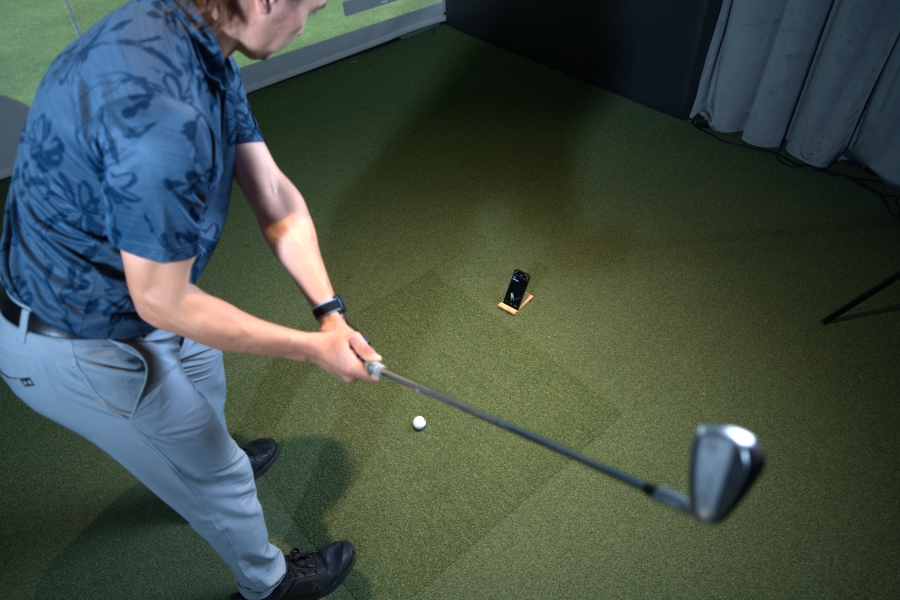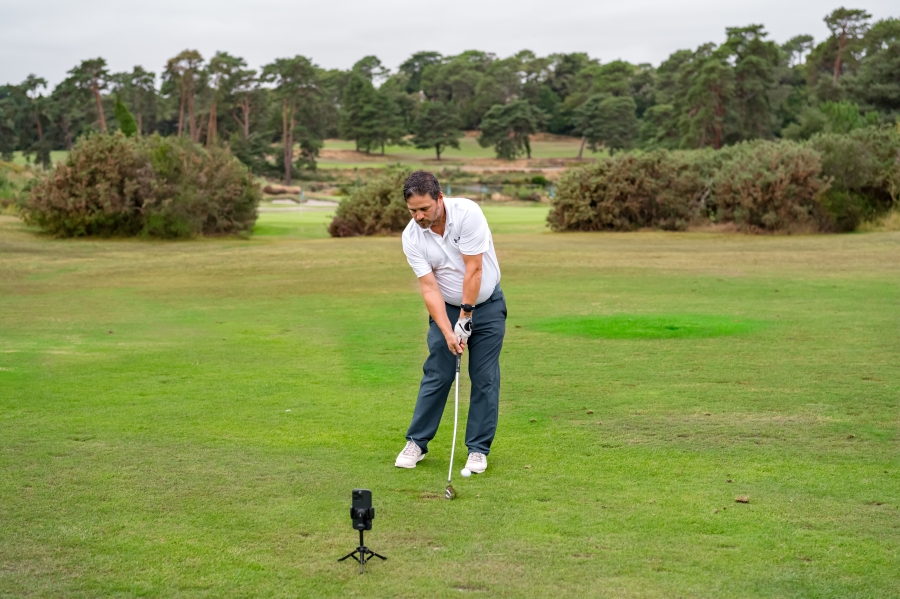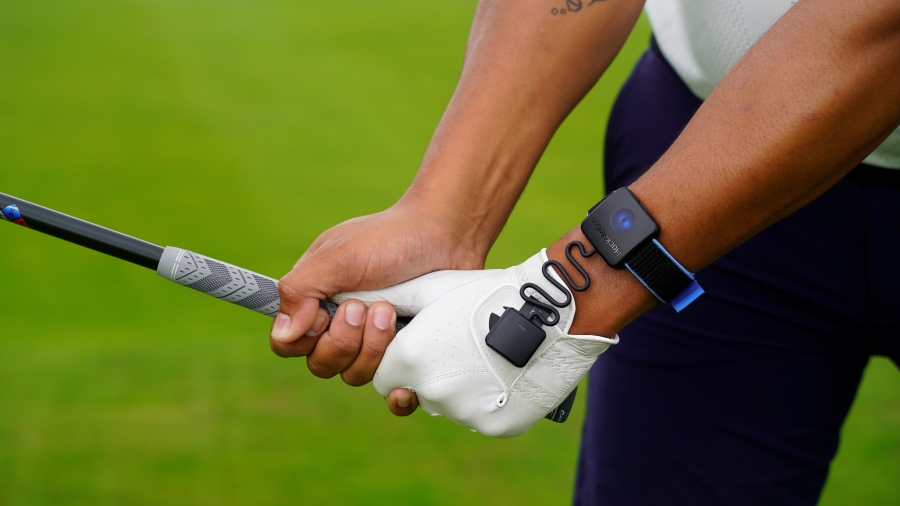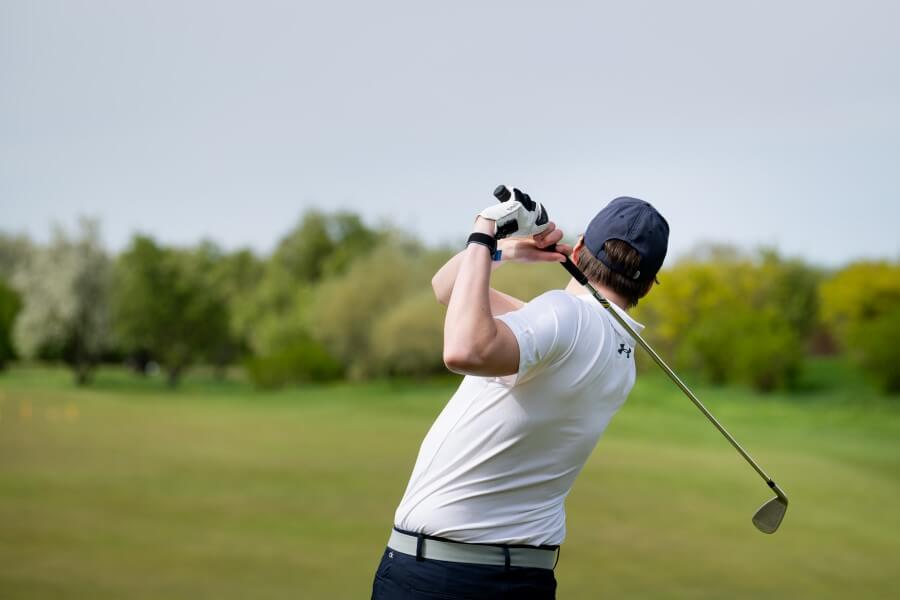How to Reduce Driver Spin: Drills, Actionable Tips & Gear Adjustments
Drivers that spin too much launch too high and fall short of their potential distance.
That’s a double disadvantage when you’re standing on the tee.
Lowering your driver spin takes more than just swapping to a different clubhead.
In this guide, we’ll share proven ways to bring spin rates down, along with practical drills you can start using today.
Reduce Driver Spin (Key Takeaways)
If you don’t have time to read through our entire guide on how to reduce spin rate with your driver, here are the key points to walk away with.
- Too much spin costs you distance and makes drives launch too high.
- A steep angle of attack increases spin loft and inflates spin rates. Shallow the strike to bring spin down.
- Excess lead wrist extension at impact leaves the face open and adds spin — a flatter or slightly flexed wrist helps.
- Deliver the handle slightly ahead at impact (without pressing forward like an iron) for better launch and spin control.
- Equipment matters: match your shaft, head, and ball to your swing. Too much spin costs distance, but too little spin can make it hard to launch and punish mishits.
How to Reduce Spin with Your Driver
Too much spin in the driver can significantly impact distance and accuracy. We mostly like to see spin under 3000 rpm, but for amateur golfers, getting more than 5000 rpm can be common.
Here are some tips, drills, and concepts to use to reduce the spin in your driver.
Stop Hitting Down Into the Ball
A steep golf swing occurs when the shaft becomes too vertical during the downswing. This causes the club to travel on a sharp, downward path.
This motion is fine for wedges in certain situations, but a big problem with longer clubs like the driver or fairway woods.
When the shaft is too steep:
- Contact is harder to control.
- Distance is reduced.
- Shots often slice, though pulls and hooks can happen too.
One of the biggest culprits is lead wrist extension (cupping) in the backswing and through impact. This wrist position keeps the shaft vertical and makes it much harder to deliver the club on the correct arc.
To fix this you’ll want to flatten the lead wrist (move it toward flexion) as you start down, while the trail wrist moves into extension.
Even a small change here can take the shaft from “straight up and down” to a much shallower, more powerful position.
HackMotion makes it easy to see if you’re staying too extended and lets you track how close you are to ideal at both the top and impact.
Get a Little Bow in the Lead Wrist
After years of studying HackMotion, we know that the wrist angle controls the clubface.
This becomes very important in chipping, putting, and even approach shots with the irons to the green. However, we can’t discount the wrist’s role in the driver swing.
As your golf club comes through the impact position, having a little extra flex in the lead wrist is a good thing.
When the lead wrist is too extended, you’ll hit the golf ball with an open face, create higher spin rates, and usually hit that high right fade shot.
This is a weak drive that can cost you 20 or even 30 yards.
Instead, start recording your wrist position at the top of the backswing and see if the HackMotion shows you as excessively extended. If it does, you may be carrying that extension down through impact with the driver.
Instead, get to a flatter wrist position at the top of the swing and see if that lowers your spin rate.
Hit the Ball in the Center of the Face
The closer you strike the ball to the center of the clubface, the more optimized your spin rate will be. Center contact produces a more penetrating ball flight and makes it easier to add distance.
To find the center more often, focus on the fundamentals:
- Keep your setup consistent.
- Maintain a flat lead wrist at the top of the backswing.
- Keep your head behind or level with the ball at impact.
Using alignment sticks during practice can help reinforce these positions and build the comfort needed to consistently find the middle of the face.
Handle Forward with Clubhead Moving Up
For a more penetrating flight and lower spin, deliver the driver with the handle slightly ahead at impact while the clubhead is moving upward.
Too many players drop their hands behind the clubhead to “help” the ball up, which opens the face and adds spin. Instead, start with a consistent setup, a small amount of lead wrist extension (around 20° is common).
A higher handle at setup can help close the face and reduce a slice, while a lower handle can open it slightly and reduce hooks.
Use HackMotion to check your numbers and make sure you can repeat them swing after swing.
Play with the Right Equipment
If you’ve made swing changes and still have too much driver spin, it may be time to check your gear. The clubhead, shaft, and golf ball all influence spin rates.
For example, a high-spin golfer using a high-spin ball can lose significant distance off the tee. Switching to a lower-spinning ball or driver head can help, but be careful not to overcorrect.
Clubs or balls that produce too little spin can make it harder to launch the ball high enough, reduce carry distance, and punish off-center hits with harsher misses.
The goal is to find the right balance: low enough spin to maximize distance, but high enough to keep the ball in the air and maintain forgiveness.
Drills to Reduce Spin with Your Driver
Once you work through the basics and figure out how your game can improve, try a few of these drills. With each one, you’ll notice that the key to controlling spin comes down to your hand and wrist position in your golf game.
Thumbs-Away Shallow Shaft Drill
This drill helps you shallow the club in transition, improve contact, and keep spin under control.
Thumbs-Away Shallow Shaft Drill – Step by Step
- Take the club to the top of your backswing.
- Feel like your thumbs point more “away from you” rather than straight up.
- From there, turn through while keeping the lead wrist flatter.
- Start with half swings, focusing on solid contact and a slight draw pattern.
- Gradually lengthen the swing as the motion becomes more comfortable.
HackMotion Motorcycle Drill
The Motorcycle Drill is one of the best for improving wrist action and controlling spin by preventing an open clubface at impact.
Motorcycle Drill – Step by Step
- Set Up: Address the ball normally.
- Add Flexion: In the downswing, feel like you’re revving a motorcycle grip — adding lead wrist flexion as the club moves down.
- Checkpoint: By the time the shaft is parallel to the ground (P6), you should have more flexion than you did at setup.
- Maintain to Impact: Keep that flexion into impact, then release naturally through the finish.
- Practice Variations: Work on this both while hitting balls and without hitting, focusing purely on the motion.
Pull the Trail Foot Back Drill
This drill promotes a shallower angle of attack and an inside path, both of which help reduce spin.
Pull the Trail Foot Back Drill – Step by Step
- Take your normal stance, then drop your trail foot (right foot for right-handed golfers) back a few inches from the target line.
- Keep your weight balanced and your shoulders square to the target.
- Swing normally, allowing the dropped foot to create more space for your arms to shallow the club.
- Focus on sweeping the ball off the tee with an upward strike.
- Alternate between this position and your normal stance to transfer the feel.
Final Thoughts
Now, you should have some great tips and tricks to reduce spin with your driver. The process may take a few driving range sessions, but it’s an easy way to pick up distance and accuracy.
Using HackMotion can help you reduce your driver spin faster; you’ll have an easier time narrowing down where your wrist angles are incorrect and how you can quickly get them to the proper position.
If high driver spin keeps stealing distance, check out professional golf lessons near me from coaches who use HackMotion to teach better launch, strike quality, and face control.

